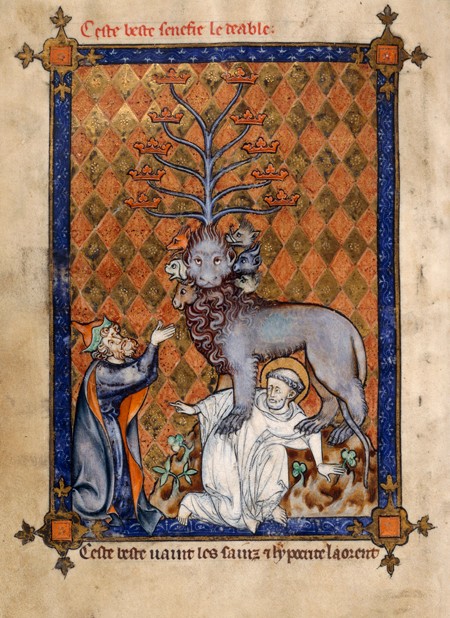I call my project a “biography” of La Somme le roi. It traces the history of one of the most popular books of the later Middle Ages, a compendium in Old French of moral instruction written by a Frère Laurent at the command of Philip III of France in 1279. La Somme le roi, or “the summa of the king,” survives in about one hundred manuscripts that range from rough copies without illumination made for itinerant preachers to some of the most luxuriously illuminated books of the period. One of the distinctive features of these luxury books is a cycle of fifteen large-scale illuminations, unusually stable both iconographically and formally throughout the life of the work, that complement and extend the material in the written treatise. Examining the diffusion of both verbal and pictorial elements of La Somme le roi across the period of roughly two centuries during which it enjoyed widespread circulation reveals how sensitive the ensemble of word and image was to new contexts of production, use, and valuation. In particular, I investigate the important role played by La Somme le roi in forming and feeding visual modes of devotion and political communication in the francophone courts of western Europe, and I ask what it means to read and to look at “royal” words and images in a variety of historical settings, from early fourteenth-century Picardy to mercantile London in the late fifteenth century.
While resident at CASVA, I was able to bring three of five chapters of the book to a state suitable for editorial review and to draft the remaining two chapters, an introduction, and a conclusion. Among the resources that made an immense difference to my project were the many databases to which the National Gallery of Art Library subscribes, including the Index of Christian Art, Europea Sacra, ARTFL, and the Lexikon des Mittelalters and International Encyclopaedia for the Middle Ages. Furthermore, the depth of the library’s holdings in a variety of medieval topics, including stained glass, architecture, and illumination, put most of my materials close at hand. I also benefited from the proximity of the Folger Shakespeare Library, where I was able to study two early printed editions of La Somme le roi in William Caxton’s English translation of 1485. It was a rare treat to be able to open the 1485 and 1507 editions side by side, as no other library has allowed me to do. Having begun my tenure at CASVA by attending the fascinating symposium on the international legacy of Heinrich Wölfflin’s Principles of Art History, in which he articulated the method of side-by-side comparison, this opportunity to put his method to work seemed an apt way to finish.
The English print editions of the late fifteenth and early sixteenth
centuries have never been considered by art historians interested in La Somme le roi, and until recently only a few of the earliest and most deluxe of the manuscripts have received any attention. The identification early in the twentieth century of the spectacular but fragmentary copy split between the British Library (Additional MS 54180) and the Fitzwilliam Museum at Cambridge University (MS 192, MS 368) with one of the few named artists of the late thirteenth century, Maître Honoré, has tended to focus scholarship on issues of style and attribution, leaving aside the truly interesting problem of the relationship between the written treatise and the picture cycle. In the philological arena, much of the work on the Old French and translated versions of the text hardly acknowledges the role of the picture cycle in the manuscript tradition. My goal for this project is to consider the words and pictures of La Somme le roi as an organic, though not immutable, whole and to understand the work not as a single manuscript but as a distributed entity (to crib a notion from the anthropologists) spread across numerous manuscripts and performing its work in relation to a variety of historically specific groups and individuals.
